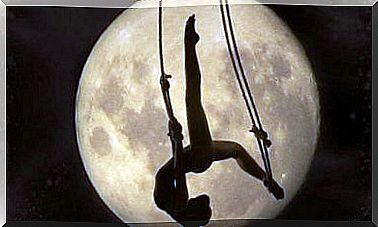Holotropic Respiratory Therapy For Wellness

Holotropic respiratory therapy (a trademark) is an experimental psychotherapy technique. Experimental psychotherapy is an approach to working with mentally healthy people. The idea is to expose patients to an experiment that helps them increase their self-awareness and know how to deal with real-life situations.
It is important to note that experimental psychotherapy has roots in so-called transpersonal psychology. The latter is the part of humanistic psychology, a branch that originated in the 1960s. More specifically, holotropic respiratory therapy was created by the Czech psychiatrist Stanislav Grof.
The primary goal of holotropic respiratory therapy is to reach a higher level of consciousness. Experts claim that the experience is similar to the effects of psychotropic drugs used by shamans or certain spiritual guides. The difference is that one achieves this condition through breathing and the purpose is therapeutic.

What is holotropic respiratory therapy?
Holotropic respiratory therapy is a technique that involves intentional and controlled hyperventilation. The purpose, as we have mentioned above, is to reach a state of changed and expanded consciousness. The ultimate goal is to get to know oneself better and enjoy the supposed psychotherapeutic benefits that proponents attribute to this technique.
Hyperventilation consists of breathing faster and deeper than usual. When you breathe normally, you inhale oxygen and exhale carbon dioxide (CO2).
The accelerated, deep breathing that occurs during hyperventilation increases the amount of oxygen in the body and reduces the amount of carbon dioxide. Under normal circumstances, this change would cause anxiety, numbness and fainting.
Holotropic respiratory therapy is a practice of induced and regulated hyperventilation. In general, one can only practice this type of breathing under controlled circumstances, usually in a group.
Otherwise, it may cause unwanted problems, such as panic attacks. Experts do not recommend this technique for patients suffering from high blood pressure, respiratory diseases, neurological disorders or mental health problems.
The technique
The first step you need to take is to learn all about the technique. You should learn the pros and cons, what to expect from it as well as the reservations you should take. Holotropic respiratory therapy sessions tend to be very long. They are usually longer than four hours.
You should practice this technique in a comfortable and quiet place. Begin by stepping barefoot into the room and lying on a mat. Relaxing music is played. The music should not be interrupted during the session. When you are comfortable, start breathing gently.
With your eyes closed or covered with an eye mask, begin controlled hyperventilation. You need to breathe fast throughout the action. Some have to direct it. Sometimes the participants alternate between being the ones “breathing” and those directing it.
At the end of the session, each of the participants colors a mandala or makes a symbolic drawing of what they are feeling at that moment. Next, everyone shares their individual experience.

The benefits of holotropic respiratory therapy
As we have mentioned above, the goal of holotropic respiratory therapy is to reach an altered state of consciousness through hyperventilation. The basic idea is that this technique allows you to reach the deepest levels of your psyche. As a result, you will be able to access unconscious information that may be very valuable to you.
Advocates of this technique argue that it is a way to recover repressed memories. During the session, you may remember forgotten people, situations, feelings, or perceptions.
This information is important because your brain has blocked it at some point. The only way you can recover that information is by expanding your mind and consciousness.
Researchers claim that holotropic breathing therapy has many benefits, primarily when it comes to relaxation and emotional balance. However, so far there is no scientific evidence that it creates an altered state of consciousness or enables you to explore your unconscious. Nevertheless, those who practice it argue that it is possible.








